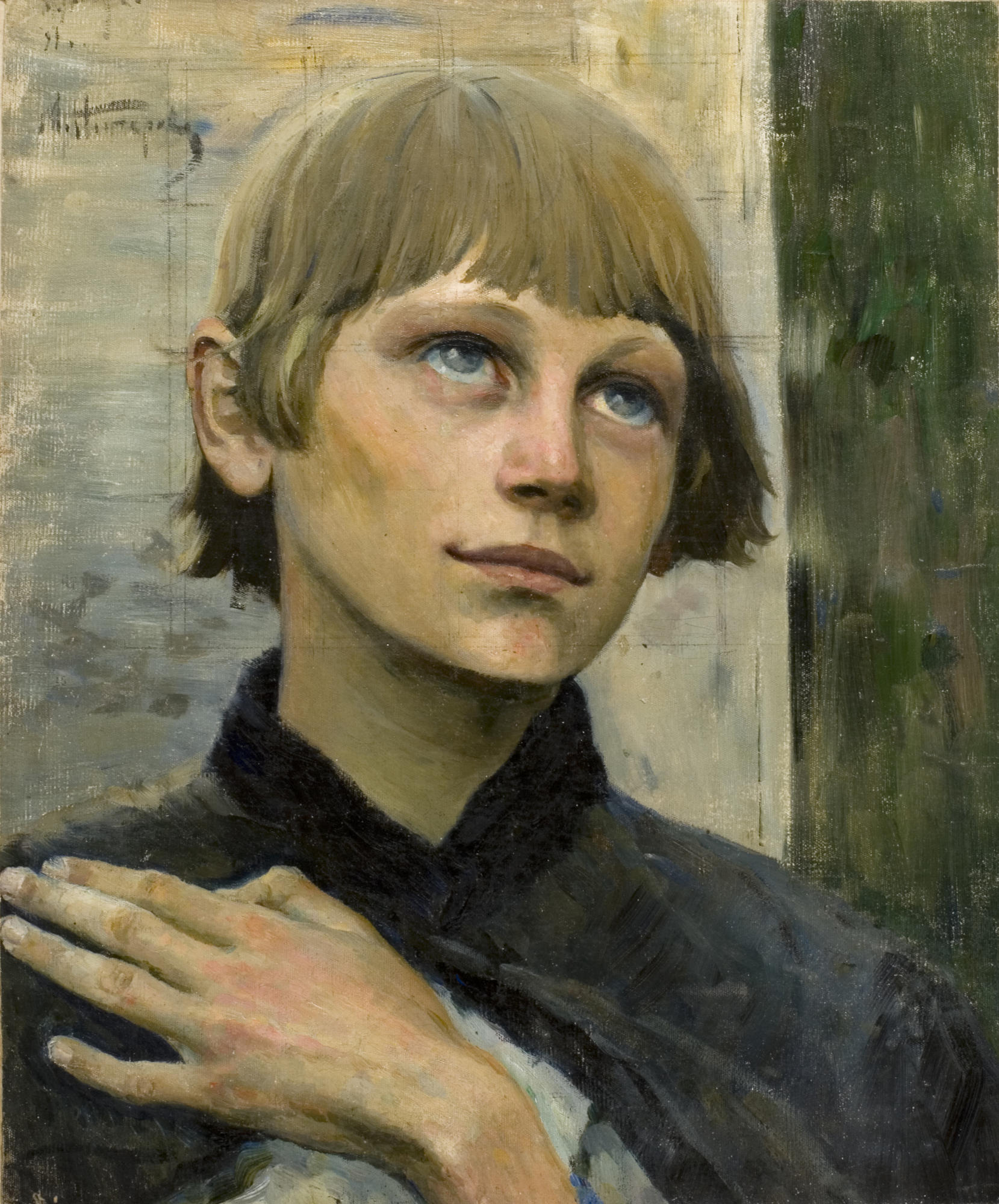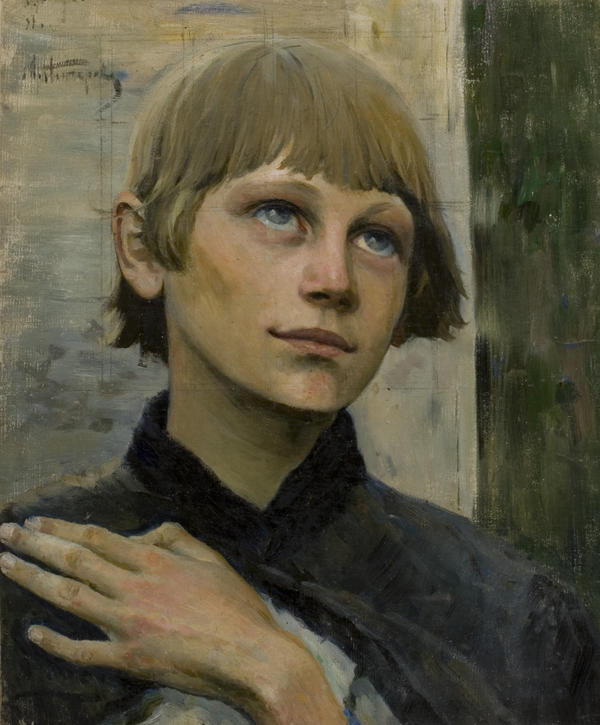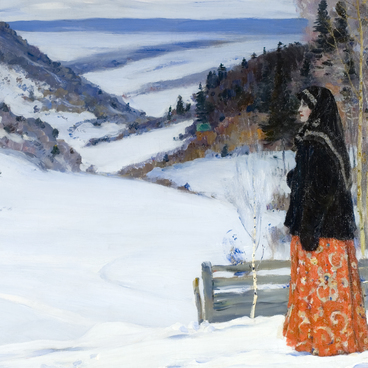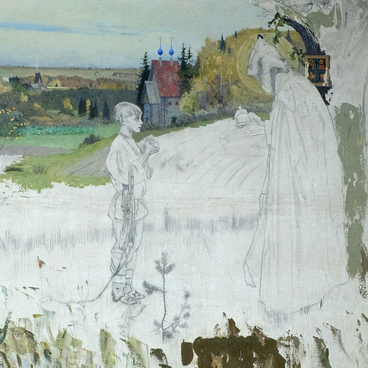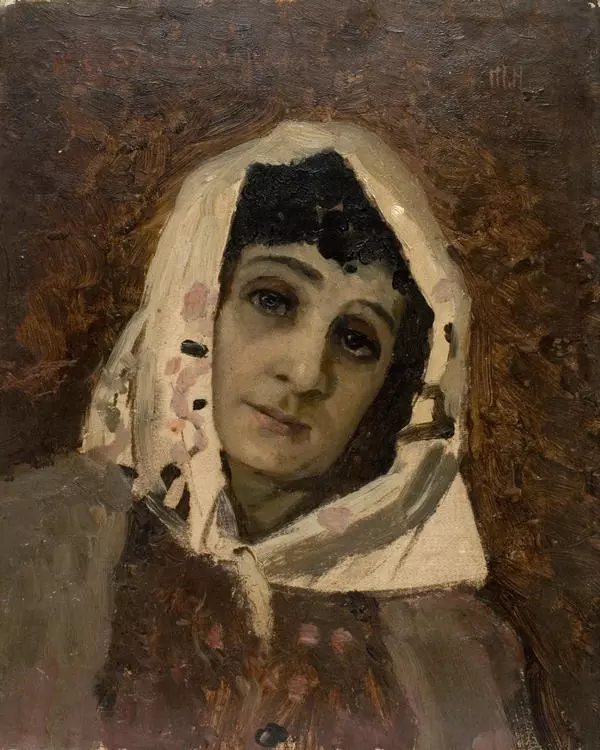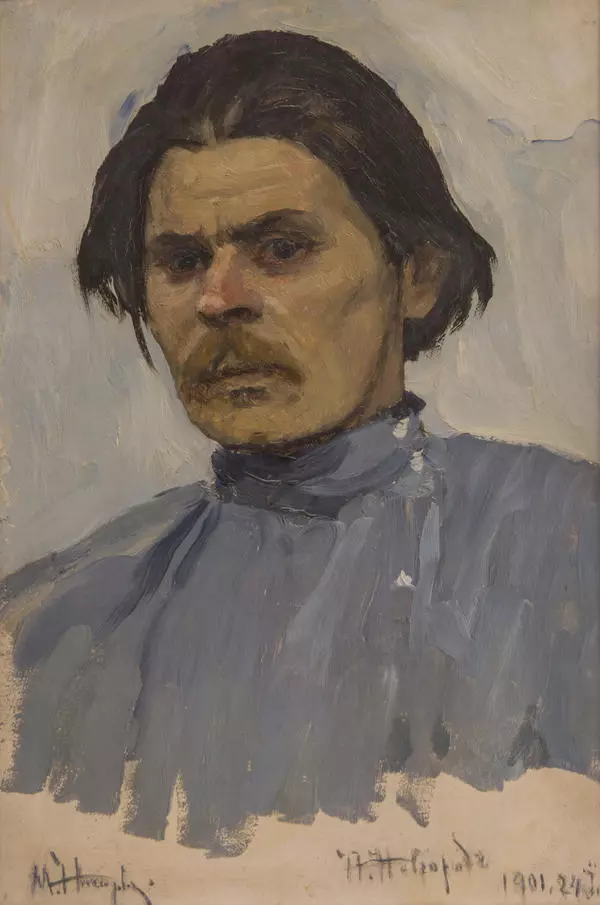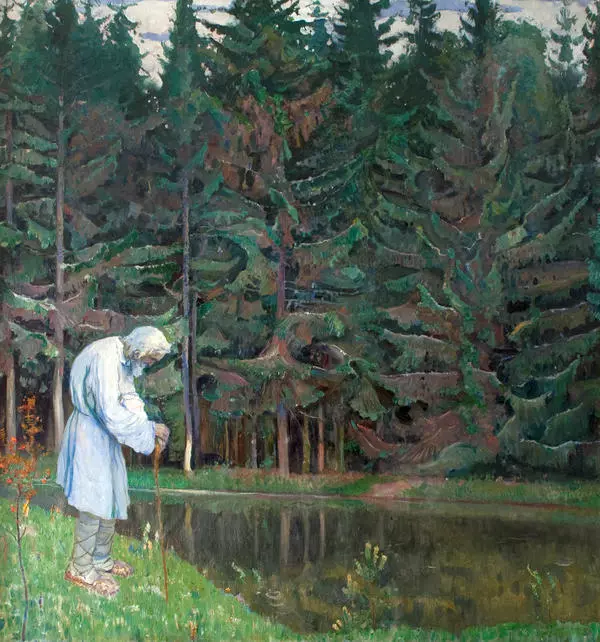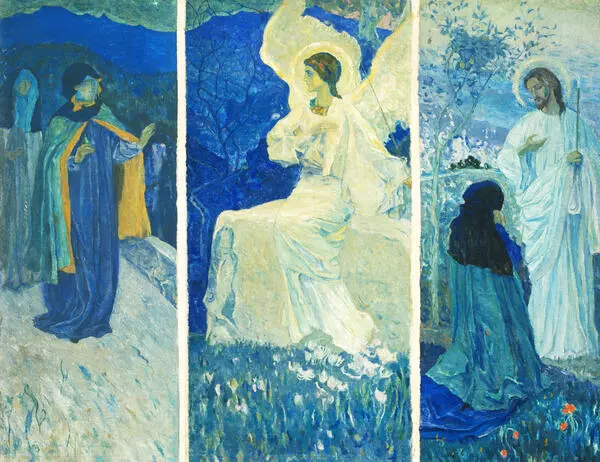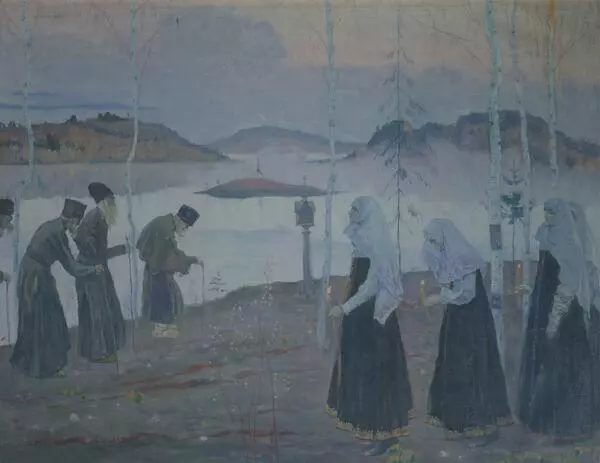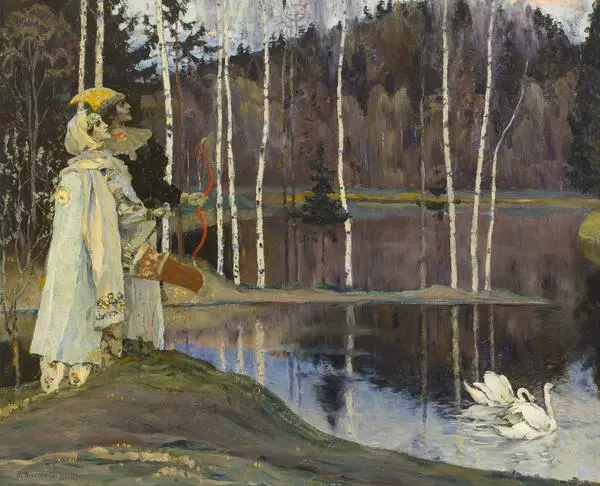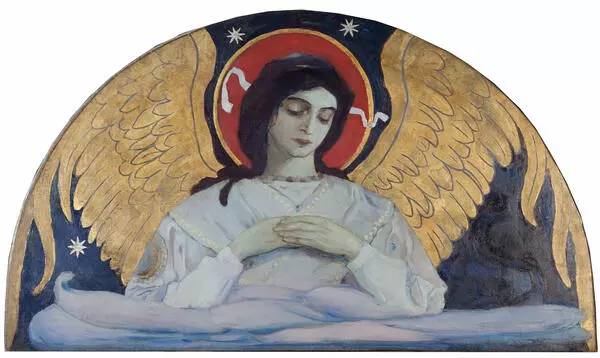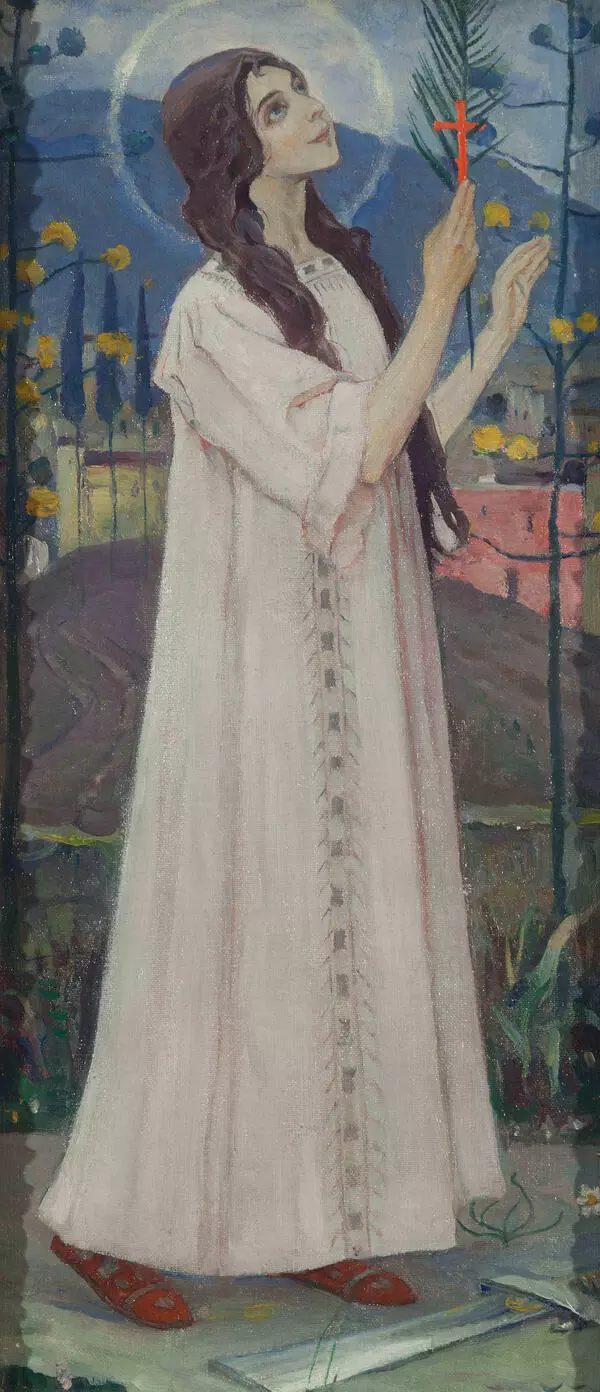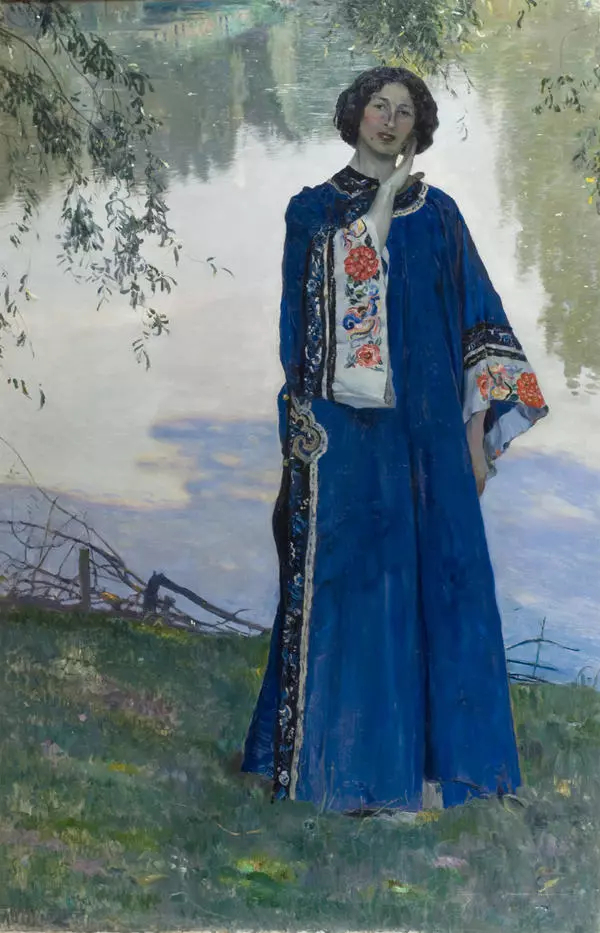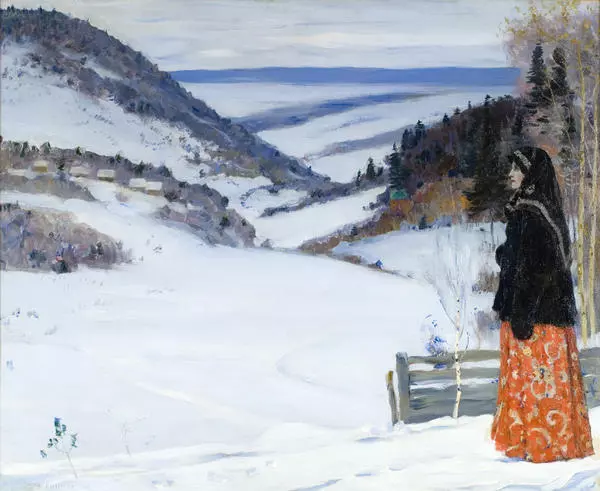The image of St. Sergius of Radonezh became the key on in the art of Mikhail Nesterov. This was prompted by the festivities devoted to the 500th anniversary of the death of the founder of the Trinity Lavra of St. Sergius that took place in Russia in 1892. Nesterov revered St. Sergius since his childhood, and the anniversary launched the series of fifteen large paintings depicting the life and service of the Venerable Sergius. A very special place among them belongs to the painting The Vision to the Youth Bartholomew, which the artist considered the best of his paintings.
The painting was highly praised by critics and delighted the admirers of Nesterov’s art. Inspired by success, he continued working on St. Sergius Series. One of the large scale paintings became The Youth of St. Sergius, for which the artist made a lot of studies.
The work started in 1891, the artist then lived in the village of Akhtyrka, Moscow Region. He changed the composition several times, painted landscapes, made drawing of the figures. A whole month was spent on studies of animals, when Nesterov regularly visited a zoo. By the end of summer he gathered sufficient materials to start working on the painting, but still had no idea how the face of the Saint would look.
The artist was in constant search, making friends and acquaintances pose for studies. At one time, he was planning to paint St. Sergius’s face from his friend Apollinary Vasnetsov who looked very young despite his mature age. But having evaluated the results of his work, he gave up the idea.
The model for the sketch Head of a Praying Youth was found by chance. The artist put off his work on the painting for a while and left for Kiev where he painted murals in the Vladimir Cathedral. He needed a female model for the image of one of the saints, and the local art school sent a student who became the model for the sketch.
As Nesterov recollected, the sketch was done outside with a plain fence as a background. The final version in the painting was modified considerably, it is hard to see female features in the exalted young man, but the face, large eyes and the expression of prayer elation depicted by the artist remained unchanged.
In general, the work on the painting The Youth of St. Sergius took six years but critics gave it lukewarm reviews. Many did not like the state of religious praying exaltation experienced by the character. This new feature, which was not Nesterov’s best, became characteristic of his art in the second half of the 1890s. Its source was probably the internal conflict the artist experienced between his former concrete vision and the desire to portray some noble idea of the spiritual life of the Saint in the form of religious self-denial.
The painting was highly praised by critics and delighted the admirers of Nesterov’s art. Inspired by success, he continued working on St. Sergius Series. One of the large scale paintings became The Youth of St. Sergius, for which the artist made a lot of studies.
The work started in 1891, the artist then lived in the village of Akhtyrka, Moscow Region. He changed the composition several times, painted landscapes, made drawing of the figures. A whole month was spent on studies of animals, when Nesterov regularly visited a zoo. By the end of summer he gathered sufficient materials to start working on the painting, but still had no idea how the face of the Saint would look.
The artist was in constant search, making friends and acquaintances pose for studies. At one time, he was planning to paint St. Sergius’s face from his friend Apollinary Vasnetsov who looked very young despite his mature age. But having evaluated the results of his work, he gave up the idea.
The model for the sketch Head of a Praying Youth was found by chance. The artist put off his work on the painting for a while and left for Kiev where he painted murals in the Vladimir Cathedral. He needed a female model for the image of one of the saints, and the local art school sent a student who became the model for the sketch.
As Nesterov recollected, the sketch was done outside with a plain fence as a background. The final version in the painting was modified considerably, it is hard to see female features in the exalted young man, but the face, large eyes and the expression of prayer elation depicted by the artist remained unchanged.
In general, the work on the painting The Youth of St. Sergius took six years but critics gave it lukewarm reviews. Many did not like the state of religious praying exaltation experienced by the character. This new feature, which was not Nesterov’s best, became characteristic of his art in the second half of the 1890s. Its source was probably the internal conflict the artist experienced between his former concrete vision and the desire to portray some noble idea of the spiritual life of the Saint in the form of religious self-denial.
